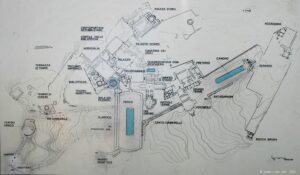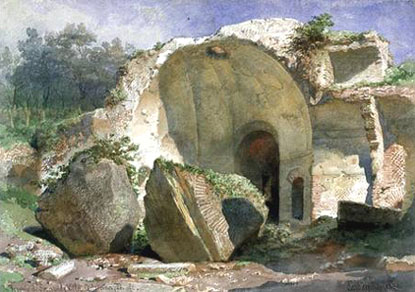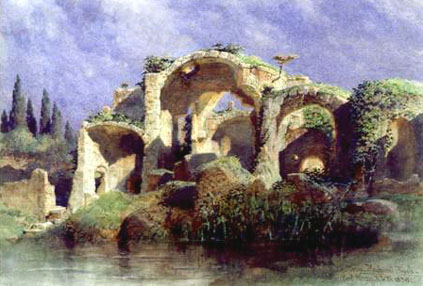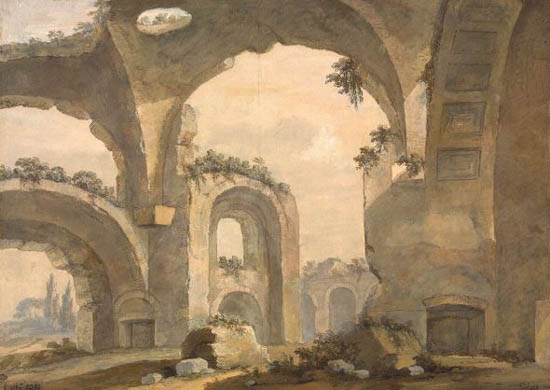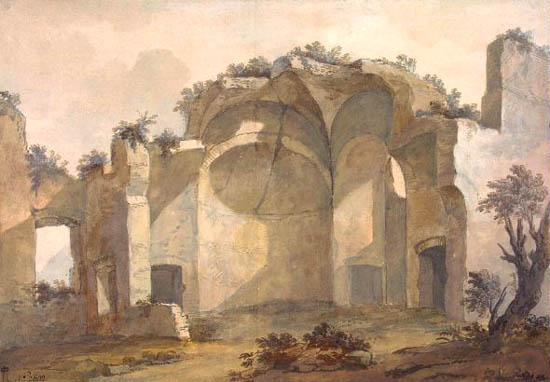The archaeological site of Hadrian’s Villa (Villa Adriana in Italian) is one of the largest and most impressive architectural complexes of ancient Rome.
Located about 25 km from Rome, this villa was built by Emperor Hadrian starting in the year 126 AD, to serve as his residence.
It was abandoned with the fall of the Western Roman Empire and restored from the 19th century onwards.
It is an essential site for enthusiasts of archaeology, Roman history, or lovers of ancient landscapes.
An exceptional imperial villa
The villa is made up of numerous buildings, gardens, and pools, spread over more than 120 hectares. It represents a fusion between Roman architecture, Greek art, as well as Oriental architecture, and is a perfect example of the grandeur of the Roman Empire at its peak.
Visitors can discover a real small city, including large reception halls, the imperial thermae or baths with mosaics and marble, temples dedicated to Roman deities, the imperial residences, archive rooms, and libraries.
One of the highlights of the villa is the Canopus, a large pool inspired by Egypt, adorned with columns and lined with statues, with the surrounding space used for banquets.
Another evocative site is the Maritime Theatre, an island surrounded by a water canal where performances are thought to have taken place.
The gardens and landscaped areas include terraces and fountains.
A museum houses numerous archaeological finds.
Photo gallery
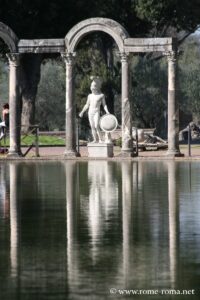
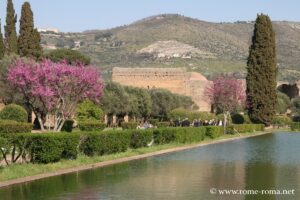
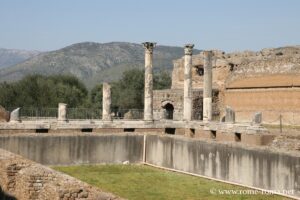
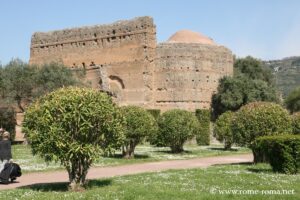
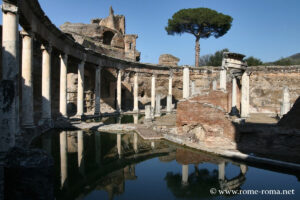
Historical Overview
Its construction probably began around 126 AD, upon Emperor Hadrian’s return from the eastern provinces (he reigned between 117–138 AD).
It is likely that the emperor was inspired by the places he most appreciated during his journey, such as the buildings of Athens (Academy, Stoa Poikile), the Canopus canal on the Nile Delta, or the Vale of Tempe in Thessaly.
While drawing on the traditional layouts of Roman villas, Hadrian’s Villa also introduced architectural innovations.
After Hadrian, the villa was further embellished. However, Constantine (reigned from 306 to 337) moved many of its artworks to Constantinople. Later, it suffered the devastation of barbarian invasions, before serving as a stone quarry in the Middle Ages to construct the buildings of Tivoli.
Many great artists took an interest in it during the Renaissance, and excavations and restorations expanded from the 19th century onwards.
Informations
| Hadrian’s Villa Largo Marguerite Yourcenar, 00010 Tivoli RM | ||||
Opening hours and visits (information not guaranteed)
| ||||
Links and visit
|
Articles on Hadrian’s Villa
Map and address
Address : Largo Marguerite Yourcenar, 1, 00010 Tivoli RM, ItalieIf you see this after your page is loaded completely, leafletJS files are missing.
Ancient views in art
Articles about Tivoli
- Hadrian’s Villa : the imperial villa in Tivoli near Rome
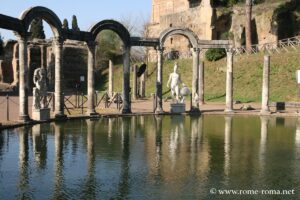 The archaeological site of Hadrian’s Villa (Villa Adriana in Italian) is one of the largest and most impressive architectural complexes ...
The archaeological site of Hadrian’s Villa (Villa Adriana in Italian) is one of the largest and most impressive architectural complexes ... - Villa Gregoriana Park
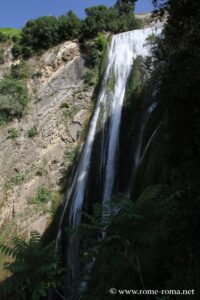 The Villa Gregoriana is a park located in Tivoli, at the foot of the historic town and the ancient acropolis, ...
The Villa Gregoriana is a park located in Tivoli, at the foot of the historic town and the ancient acropolis, ... - Tivoli: its villas and its heritage
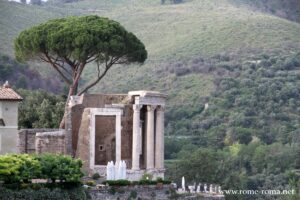 Tivoli, less than 30 km from Rome, is a small town renowned for its heritage with its UNESCO World Heritage ...
Tivoli, less than 30 km from Rome, is a small town renowned for its heritage with its UNESCO World Heritage ... - Villa d’Este in Tivoli: water show of the Renaissance
 The Villa d’Este in Tivoli, located about 30 kilometers from Rome, is a jewel of the Italian Renaissance listed as ...
The Villa d’Este in Tivoli, located about 30 kilometers from Rome, is a jewel of the Italian Renaissance listed as ...

